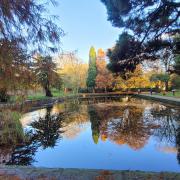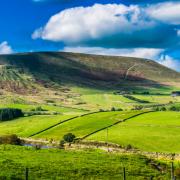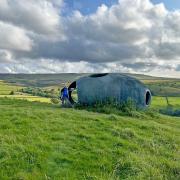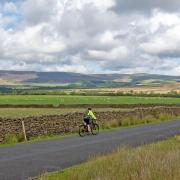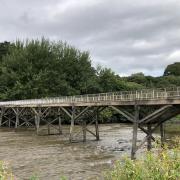Mark Gilligan's eulogy in words and pictures reveals his love affair with two remote Lakeland valleys
They say you always remember your first time and for me that’s certainly true. I recall standing there in awe as this beauty unveiled herself, peeling back layer upon layer. I was mesmerised.
Now, don’t get the wrong idea. I am a happily marriage man and this was my first encounter with Wast Water. I stood there transfixed as the light changed quickly, bursting through fast-moving clouds, which allowed flickering bursts of sunshine to illuminate those soft curves of the fells, as they tumbled down to her shoreline.
Within a short time, the clouds rolled in and sharp showers began to fall, fading away as quickly as they came. Once again, the rays of sunlight were back, hunting for gaps, punching light from behind the dark clouds, to create yet another mood that was just as captivating as the first.
That for me was my introduction to England’s deepest stretch of water and, as a professional photographer, I knew that this commission I had been given was going to be special. I didn’t realise at the time, though, just how important this area of the Western Fells would soon become in my life.
I spent several days walking the area, watching and capturing those moods and after delivering the images to my client, I couldn’t wait to get back and take more.
My wife and I were no strangers to the Lakes but I had never felt the pull of an area like this before.
A nice way to approach is via Lund Bridge near Wasdale Hall, walking alongside the River Irt, as it opens out into a pleasing lagoon before revealing all before you.
Because of the trees and wooded area here, it has the feel of an enclosed valley. But it isn’t.
As you head back to the wind shelter on the mound over looking ‘the beach’ of shingle, stand and admire the view. It reminds me of an amphitheatre. Whatever she is wearing today, we are all invited to see the daily play she puts on. It changes with the weather, as each season delivers different dramas, light-hearted fluffy clouds drifting slowly on hazy summer evenings and the most breathtaking of sunsets as the scree glows with orange, reds and pinks at the end of the day.
It never disappoints yet danger is never far away and, with England’s highest point watching proceedings, she demands your full attention and respect.
The overall beauty of the lakes is its diversity. It gives us so many different views and perspectives.
I enjoy contrasts and after a short hop over the top of Whin Rigg, you pass through Miterdale and descend into a place that is a stone’s throw from Wast Water. The Esk Valley.
It could be a million miles away. My first ‘proper’ look was from the top of Hard Knott on a very windy and cloudy day. It was mid afternoon and I was with my good friend and walking companion David Powell-Thompson, the television researcher and presenter, well known as Julia Bradbury’s guide on the Wainwright programmes. His knowledge is invaluableand we had scanned the weather, deciding that late afternoon would give us some great shots of this valley. We weren’t wrong!
As we reached the summit, the heavy rain began to abate. The clouds slowly began to lift and part, allowing that ‘magical light’ to peer through and show us what we were missing. It was as if someone was switching on a torch and off illuminating the valley below with quick moving patches of light.
The base of the Esk Buttress was now just visible. However, as the light improved, I could look down onto the water falls at Lingcove and scan right up the valley beyond Muncaster Fell towards the Irish Sea.
Standing there was difficult, as the wind was howling and I had to weigh down my tripod. I knew as I clicked away that these images would be special and offer a complete contrast to the ‘neighbouringvalley’.
You appreciate the immediate difference between them. Apart from the obvious mass of water in one, you can see the River Esk almost in its entirety, as it meanders and flows down through the fells, the villages and farms to its tidal, marsh estuary on the coast. It’s a ‘true’ valley whereas Wast Water is like a saucer.
Wast Water hits you between the eyes. It’s immediate. However, while you walk alongside the Esk, you encounter hidden gems with each twist and turn.
Wasdale is sparsely populated with a few hardy souls working on farms and in the famous Wasdale Head Inn. The numbers are wollen by day-trippers and walkers.
Conversely, the Esk valley, appears positively ‘alive’ with villages, farms, pubs and people. The former iron ore industry originally based above Boot, now sees ‘The Ratty’ taking its different ‘cargo’ as walkers and holiday makers enjoy the spectacular ride from Ravenglass to Dalegarth.
The two valleys couldn’t be any more different yet they complement each other so well and, from my own perspective, both hold a special place in my heart.
You don’t just visit them. You experience them.
Words and Photography by Mark Gilligan















